1970s

| Millennium: | 2nd millennium |
| Centuries: | |
| Decades: | |
| Years: | |
| Categories: |
|
The 1970s (pronounced "nineteen-seventies", commonly abbreviated as the "Seventies") was a decade of the Gregorian calendar that began on January 1, 1970, and ended on December 31, 1979.
Overview
In the 21st century, historians have increasingly portrayed the 1970s as a "pivot of change" in world history focusing especially on the economic upheavals.[1] In the Western world, social progressive values that began in the 1960s, such as increasing political awareness and economic liberty of women, continued to grow. In the United Kingdom, the 1979 elections resulted in the victory of its Conservative leader Margaret Thatcher, the first female British Prime Minister. Industrialized countries, except Japan, experienced an economic recession due to an oil crisis caused by oil embargoes by the Organization of Arab Petroleum Exporting Countries. The crisis saw the first instance of stagflation which began a political and economic trend of the replacement of Keynesian economic theory with neoliberal economic theory, with the first neoliberal governments being created in Chile, where a military coup led by Augusto Pinochet took place in 1973.
Novelist Tom Wolfe coined the term "'Me' decade" in his essay "The 'Me' Decade and the Third Great Awakening", published by New York Magazine in August 1976 referring to the 1970s. The term describes a general new attitude of Americans towards atomized individualism and away from communitarianism, in clear contrast with the 1960s.
In Asia, affairs regarding the People's Republic of China changed significantly following the recognition of the PRC by the United Nations, the death of Mao Zedong and the beginning of market liberalization by Mao's successors. Despite facing an oil crisis due to the OPEC embargo, the economy of Japan witnessed a large boom in this period, overtaking the economy of West Germany to become the second-largest in the world.[2] The United States withdrew its military forces from their previous involvement in the Vietnam War, which had grown enormously unpopular. In 1979, the Soviet Union invaded Afghanistan, which led to an ongoing war for ten years.
The 1970s saw an initial increase in violence in the Middle East as Egypt and Syria declared war on Israel, but in the late 1970s, the situation in the Middle East was fundamentally altered when Egypt signed the Egyptian–Israeli Peace Treaty. Anwar El Sadat, President of Egypt, was instrumental in the event and consequently became extremely unpopular in the Arab world and the wider Muslim world.[3] He was assassinated in 1981. Political tensions in Iran exploded with the Iranian Revolution in 1979, which overthrew the Pahlavi dynasty and established an Islamic republic of Iran under the leadership of the Ayatollah Khomeini.
Africa saw further decolonization in the decade, with Angola and Mozambique gaining their independence in 1975 from the Portuguese Empire after the restoration of democracy in Portugal. The continent was, however, plagued by endemic military coups, with the long-reigning Emperor of Ethiopia Haile Selassie being removed, civil wars and famine.
The economies of much of the developing world continued to make steady progress in the early 1970s because of the Green Revolution. They might have thrived and become stable in the way that Europe recovered after World War II through the Marshall Plan; however, their economic growth was slowed by the oil crisis but boomed immediately after.
Politics and wars
Wars
The most notable wars and/or other conflicts of the decade include:
- The Cold War (1945–1990)
- The Vietnam War came to a close in 1975 with the fall of Saigon and the unconditional surrender of South Vietnam on April 30, 1975. The following year, Vietnam was officially declared reunited.
- Soviet war in Afghanistan (1979–1989) - Although taking place almost entirely throughout the 1980s, the war officially started on December 27, 1979.
- Angolan Civil War (1975–2002) - resulting in intervention by multiple countries on the Marxist and anti-Marxist sides, with Cuba and Mozambique supporting the Marxist faction while South Africa and Zaire support the anti-Marxists.
- Ethiopian Civil War (1976–1991)
- The Portuguese Colonial War (1961-1974)
- The Bangladesh Liberation War of 1971 in South Asia, engaging East Pakistan, West Pakistan, and India
- Arab–Israeli conflict (Early 20th century–present)
- Yom Kippur War (1973) - the war was launched by Egypt and Syria against Israel in October 1973 to recover territories lost by the Arabs in the 1967 conflict. The Israelis were taken by surprise and suffered heavy losses before they rallied. In the end, they managed to repel the Egyptians (and a simultaneous attack by Syria in the Golan Heights) and crossed the Suez Canal into Egypt proper. In 1978, Egypt signed a peace treaty with Israel at Camp David in the United States, ending outstanding disputes between the two countries. Sadat's actions would lead to his assassination in 1981.
- Indian emergency (1975-1977)
- Lebanese Civil War (1975–1990) - A civil war in the Middle East which at times also involved the PLO and Israel during the early 1980s.
- Western Sahara War (1975–1991) - A regional war pinning the rebel Polisario Front against Morocco and Mauritania.
- Ugandan–Tanzanian War (1978–1979) - the war which was fought between Uganda and Tanzania was based on an expansionist agenda to annex territory from Tanzania. The war resulted in the overthrow of Idi Amin's regime.
- The Ogaden War (1977–1978) was another African conflict between Somalia and Ethiopia over control of the Ogaden region.
International conflicts
The most notable International conflicts of the decade include:
- Major conflict between capitalist and communist forces in multiple countries, while attempts are made by the Soviet Union and the United States to lessen the chance for conflict, such as both countries endorsing nuclear nonproliferation.
- In 1976 peaceful student protests in the Soweto township of South Africa lead to the Soweto Uprising when more than 700 black school children were killed by South Africa's Security Police.
- Rise of separatism in the province of Quebec in Canada. In 1970 radical Quebec nationalist and Marxist militants of the Front de libération du Québec (FLQ) kidnap the Quebec labour minister Pierre Laporte and British Trade Commissioner James Cross during the October Crisis, resulting in Laporte being killed, and the enactment of martial law in Canada under the War Measures Act, resulting in a campaign by the Canadian government which arrests suspected FLQ supporters. The election of the Parti Québécois led by René Lévesque in the province of Quebec in Canada, brings the first political party committed to Quebec independence into power in Quebec. Lévesque's government pursues an agenda to secede Quebec from Canada by democratic means and strengthen Francophone Québécois culture in the late 1970s, such as the controversial Charter of the French Language more commonly known in Quebec and Canada as "Bill 101".
- Martial law was declared in the Philippines on September 21, 1972, by President Ferdinand Marcos.
- In Cambodia the communist leader Pol Pot led a revolution against the American-backed government of Lon Nol. On April 17, 1975, Pot's forces captured Phnom Penh, the capital, two years after America had halted the bombings of their positions. His communist government, the Khmer Rouge, forced people out of the cities to clear jungles and establish a radical, Marxist agrarian society. Buddhist priests and monks, along with anyone who spoke foreign languages, had any sort of education, or even wore eyeglasses were tortured or killed. As many as 3 million people may have died. Vietnam invaded the country at the start of 1979, overthrowing the Khmer Rouge and installing a satellite government. This provoked a brief, but furious border war with China in February of that year.
- The Iranian Revolution of 1979 transformed Iran from an autocratic pro-Western monarchy under Shah Mohammad Reza Pahlavi to a theocratic Islamist government under the leadership of Ayatollah Ruhollah Khomeini. Distrust between the revolutionaries and Western powers led to the Iran hostage crisis on November 4, 1979, where 66 diplomats, mainly from the United States, were held captive for 444 days.
- Growing internal tensions take place in Yugoslavia beginning with the Croatian Spring movement in 1971 which demands greater decentralization of power to the constituent republics of Yugoslavia. Yugoslavia's communist ruler Joseph Broz Tito subdues the Croatian Spring movement and arrests its leaders, but does initiate major constitutional reform resulting in the 1974 Constitution which decentralized powers to the republics, gave them the official right to separate from Yugoslavia, and weakened the influence of Serbia (Yugoslavia's largest and most populous constituent republic) in the federation by granting significant powers to the Serbian autonomous provinces of Kosovo and Vojvodina. In addition, the 1974 Constitution consolidated Tito's dictatorship by proclaiming him president-for-life. The 1974 Constitution would become resented by Serbs and began a gradual escalation of ethnic tensions.
Coups

The most prominent coups d'état of the decade include:
- 1970 – Coup in Syria, led by Hafez al-Assad.
- 1971 – Military coup in Uganda led by Idi Amin.
- 1973 – Coup d'état in Chile on September 11th, Salvador Allende overthrown and killed in a military attack on the presidential palace. Augusto Pinochet takes power backed by the military junta.
- 1974 – Military coup in Ethiopia led to the overthrown of Haile Selassie by the communist junta led by General Aman Andom and Mengistu Haile Mariam, ending one of the world's longest lasting monarchies in history.
- 1976 – Jorge Rafael Videla seizes control of Argentina in 1976 through a coup sponsored by the Argentine military, establishing himself as a dictator of a military junta government in the country.
- 1977 Military coup in Pakistan political leaders including Zulfikar Ali Bhutto arrested.Martial law declared
- 1979 – Attempted coup in Iran, backed by the United States, to overthrow the interim government, which had come to power after the Iranian Revolution.
Terrorist attacks
The most notable terrorist attacks of the decade include:
- The Munich massacre takes place at the 1972 Summer Olympics in Munich, Germany, where Palestinian Arab terrorists of the Black September terrorist organization kidnap and murder eleven Israeli athletes.
- Rise in the use of terrorism by militant organizations across the world. Groups in Europe like the Red Brigades and the Baader-Meinhof Gang were responsible for a spate of bombings, kidnappings, and murders. Violence continued in Northern Ireland and the Middle East. Radical American groups existed as well, such as the Weather Underground and the Symbionese Liberation Army, but they never achieved the size or strength of their European counterparts.
- On September 6, 1970, the world witnessed the beginnings of modern rebellious fighting in what is today called as Skyjack Sunday. Palestinian terrorists hijacked four airliners and took over 300 people on board as hostage. The hostages were later released, but the planes were blown up.
Prominent political events
Worldwide
- 1973 oil crisis and 1979 energy crisis
- The presence and rise of a significant number of women as heads of state and heads of government in a number of countries across the world, many being the first women to hold such positions, such as Soong Ching-ling continuing as the first Chairwoman of the People's Republic of China until 1972, Isabel Martínez de Perón as the first woman President in Argentina in 1974 until being deposed in 1976, Elisabeth Domitien becomes the first woman Prime Minister of Lesotho, Indira Gandhi continuing as Prime Minister of India until 1977, Lidia Gueiler Tejada becoming the interim President of Bolivia beginning from 1979 to 1980, Maria de Lourdes Pintasilgo becoming the first woman Prime Minister of Portugal in 1979, and Margaret Thatcher becoming the first woman Prime Minister of the United Kingdom.
Americas

- United States President Richard Nixon resigned as President on August 9, 1974, while facing charges for impeachment for the Watergate scandal.
- Augusto Pinochet rose to power as ruler of Chile after overthrowing the country's Socialist president Salvador Allende in 1973 with the assistance of the Central Intelligence Agency (CIA) of the United States. Pinochet would remain the dictator of Chile until 1990.
- Suriname was granted independence from the Netherlands on November 25, 1975.
- In Guyana, the Rev. Jim Jones led several hundred people from the United States to establish a Utopian Marxist commune in the jungle named Jonestown. Amid allegations of corruption, mental and physical abuse by Jones on his followers, and denying them the right to leave Jonestown, a Congressional committee visited Guyana to investigate in November 1978. They were attacked by Jones' guards, and Congressman Leo Ryan was killed. The demented Jones then ordered everyone in the commune to commit suicide. The people drank, or were forced to drink, cyanide-laced fruit punch. A total of 900 dead were found, including Jones, who had shot himself.
Europe

- Margaret Thatcher and the Conservative party rose to power in the United Kingdom in 1979, initiating a neoliberal economic policy of reducing government spending, weakening the power of trade unions, and promoting economic and trade liberalization.
- Francisco Franco died after 39 years in power. Juan Carlos I was crowned king of Spain and called for reintroduction of democracy. The dictatorship in Spain ended. The first general elections were held in 1977 and Adolfo Suárez became Prime minister of Spain after his Centrist Democratic Union won. The Socialist and Communist parties were legalised. The current Spanish Constitution was signed in 1978.
- In 1972 Erich Honecker was chosen to lead East Germany, a role he would fill for the whole of the 1970s and 1980s. The mid-1970s were a time of extreme recession for East Germany, and as a result of the country's higher debts, consumer goods became more and more scarce. If East Germans had enough money to procure a television set, a telephone, or a Trabant automobile, they were placed on waiting lists which caused them to wait as much as a decade for the item in question.
- The Soviet Union under the leadership of Leonid Brezhnev, having the largest armed forces and largest stockpile of nuclear weapons in the world, pursued an agenda to lessen tensions with its rival superpower, the United States, for most of the seventies. That policy known as détente abruptly ended with the Soviet invasion in Afghanistan at the end of 1979. While known as a "period of stagnation" in Soviet historiography, the Seventies are largely considered as a sort of a golden age of the USSR in terms of stability and relative well-being. Nevertheless, hidden inflation continued to increase for the second straight decade, and production consistently fell short of demand in agriculture and consumer goods manufacturing. By the end of the 1970s, signs of social and economic stagnation were becoming very pronounced.
- Enver Hoxha's rule in Albania was characterized in the 1970s by growing isolation, first from a very public schism with the Soviet Union the decade before, and then by a split in friendly relations with China in 1978. Albania normalized relations with Yugoslavia in 1971, and attempted trade agreements with other European nations, but was met with vocal disapproval by the United Kingdom and United States.
- 1978 would become known as the "Year of Three Popes". In August, Paul VI, who had ruled since 1963, died. His successor was Cardinal Albino Luciano, who took the name John Paul. But only 33 days later, he was found dead, and the Catholic Church had to elect another pope. On October 16, Karol Wojtyła, a Polish cardinal, was elected, becoming Pope John Paul II. He was the first non-Italian pope since 1523.
Asia
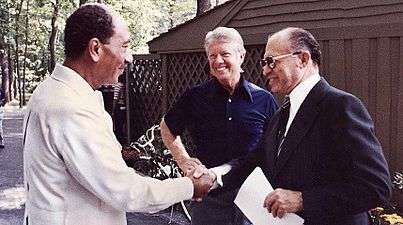

- On 17 September 1978 the Camp David Accords are signed between Israel and Egypt. The Accords led directly to the 1979 Israel-Egypt Peace Treaty. They also resulted in Sadat and Begin sharing the 1978 Nobel Peace Prize.
- Major changes in the People's Republic of China. US president Richard Nixon visited the country in 1972, restoring relations between the two countries, although diplomatic ties were not established until 1979. In 1976 Mao Zedong and Zhou Enlai both died, beginning a new era. After the brief rule of Mao's chosen successor Hua Guofeng, Deng Xiaoping emerged as China's paramount leader, and began to shift the country towards market economics and away from ideologically driven policies.
- In Iraq, Saddam Hussein began to rise to power by helping to modernize the country. One major initiative was removing the Western monopoly on oil, which later during the high prices of 1973 oil crisis would help Hussein's ambitious plans. On July 16, 1979, he assumed the presidency cementing his rise to power. His presidency led to the breaking off of a Syrian-Iraqi unification, which had been sought under his predecessor Ahmed Hassan al-Bakr and would lead to the Iran–Iraq War starting in the 1980s.
- Japan's economic growth surpassed the rest of the world in the 1970s, unseating the United States as the world's foremost industrial power.
- On April 17, 1975, the Khmer Rouge, led by Pol Pot, took over Cambodia's capital Phnom Penh.
- From 1975 to 1979, the Khmer Rouge carried out the Cambodian Genocide that killed nearly two million.
- On April 13, 1975, the Lebanese Civil War began.
- 1978 Zia ul Haq comes to power
- 1979 Zulfiqar Ali Bhutto hanged in jail
- 1979 Afghan Miracle and Pakistan's GDP rises to 6.2% (highest in the world at the time )
Africa
- Idi Amin, President of Uganda from 1971 to 1979, after rising to power in a coup becomes infamous for his brutal dictatorship in Uganda. Amin's regime persecutes opposition to his rule, pursues a racist agenda of removing Asians from Uganda (particularly Indians who arrived in Uganda during British colonial rule). Amin initiates the Ugandan–Tanzanian War in 1978 in alliance with Libya based on an expansionist agenda to annex territory from Tanzania which results in Ugandan defeat and Amin's overthrow in 1979.
- South African activist Steve Biko dies in 1977.
- Francisco Macías Nguema ruled Equatorial Guinea as a brutal dictator from 1969 until his overthrow and execution in 1979.
- Jean-Bédel Bokassa, who had ruled the Central African Republic since 1965, proclaimed himself Emperor Bokasa I and renamed his impoverished country the Central African Empire in 1977. He was overthrown two years later and went into exile.
Gallery of notable world leaders
Note: Names of country leaders shown below in bold face remained in power continuously throughout the entirety of the decade.


.jpg)
.jpg)

.jpg)

.jpg)
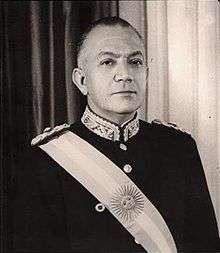



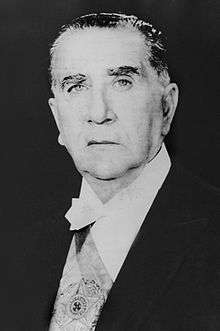




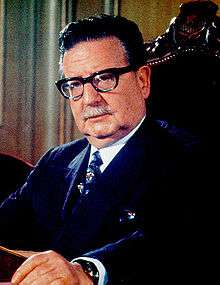
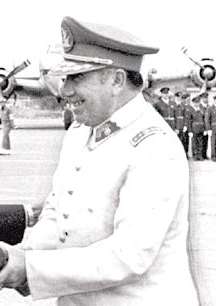









 Ayatollah Ruhollah Khomeini
Ayatollah Ruhollah Khomeini
.jpg)


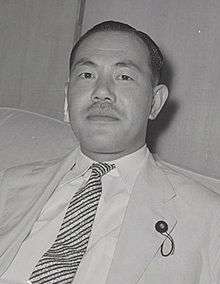
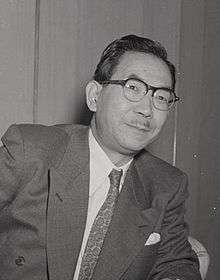
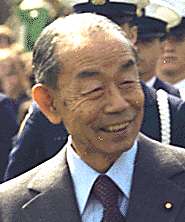

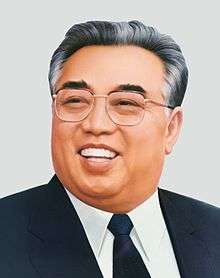



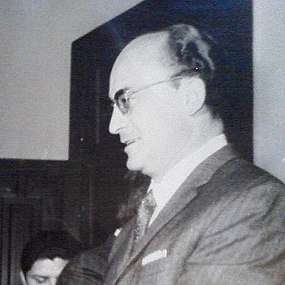
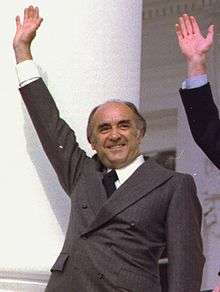




.jpg)


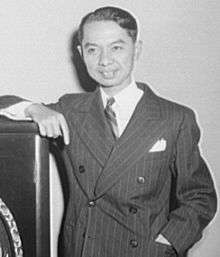


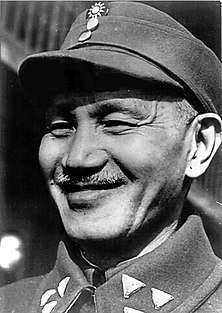


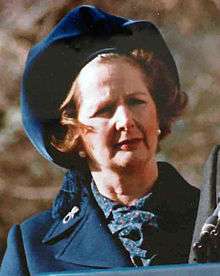



.jpg)

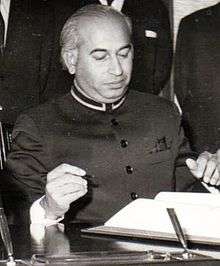
Disasters
Natural disasters
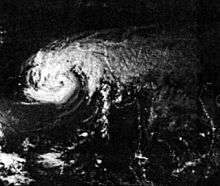
- On January 5, 1970, the 7.1 Mw Tonghai earthquake shakes Tonghai County, Yunnan province, China, with a maximum Mercalli intensity of X (Extreme). Between 10,000–14,621 were killed and 26,783 were injured.
- On May 31, 1970, the 1970 Ancash earthquake caused a landslide that buried the town of Yungay, Peru; more than 47,000 people were killed.
- The 1970 Bhola cyclone, a 120-mph (193 km/h) tropical cyclone, hit the densely populated Ganges Delta region of East Pakistan (now Bangladesh) on November 12 and 13, 1970, killing an estimated 500,000 people. The storm remains to date the deadliest tropical cyclone in world history.
- On September 29, 1971, a cyclone in the Bay of Bengal, in the Indian state of Odisha, killed 10,000.
- On April 3, 1974, the 1974 Super Outbreak occurred in the U.S. producing 148 tornadoes and killing a total of 330 people.
- On December 24, 1974, Cyclone Tracy devastated the Australian city of Darwin.
- Bangladesh famine of 1974 — Official records claim a death toll of 26,000. However, various sources claim about 1,000,000.
- On August 8, 1975, the Banqiao Dam, in China's Henan Province, failed after a freak typhoon; over 200,000 people perished.
- On February 4, 1976, a major earthquake in Guatemala and Honduras killed more than 22,000.
- On July 28, 1976, a 7.5 earthquake flattened Tangshan, China, killing 242,769 people and injuring 164,851.
- On August 17, 1976, a magnitude 8 earthquake struck Moro Gulf near the island of sulu in Mindanao, Philippines causing a tsunami killing 5,000 to 8,000 people.
- Super Typhoon Tip affected areas in the southwestern Pacific Ocean from October 4–19, 1979. Off the coast of Guam, Tip became the largest and most powerful tropical cyclone ever recorded, with a gale diameter of almost 1,400 miles, 190-mph winds, and a record intensity of 870 millibars.
Non-natural disasters
- On November 14, 1970, Southern Airways Flight 932 carrying the entire Marshall (West Virginia) football team and boosters crashed into a mountainside near Ceredo, West Virginia, on approach to Tri-State Airport in heavy rain and fog. They were returning from a road game loss at East Carolina University in Greenville, North Carolina. There were no survivors.
- On July 30, 1971, All Nippon Airways Flight 58 collided with a JASDF fighter plane, killing all 162 on board. The JASDF pilot survived.
- On December 29, 1972, Eastern Air Lines Flight 401 crashed in the Florida Everglades while its crew was distracted. 101 people died in the accident while 75 survived.
- On January 22, 1973, an Alia Boeing 707, chartered by Nigeria Airways, crashed upon landing at Nigeria's Kano Airport after one of its landing gear struts collapsed. 176 of the 202 people on board perished, leaving 26 survivors.
- On March 3, 1974, Turkish Airlines Flight 981 crashed in northern France after a cargo hatch blowout, killing all 346 people aboard.
- On April 4, 1975, the rear loading ramp on a USAF Lockheed C-5 Galaxy blew open mid-flight, causing explosive decompression that crippled the aircraft. 153 were killed in the incident while 175 survived.
- On November 10, 1975, the U.S. Great Lakes bulk freighter SS Edmund Fitzgerald foundered on Lake Superior with the loss of all 29 crewmen.
- On September 10, 1976, in the Zagreb mid-air collision, a British Airways Hawker Siddeley Trident and an Inex-Adria Aviopromet Douglas DC-9 collided near Zagreb, Yugoslavia (now Croatia), killing all 176 aboard both planes and another person on the ground.
- On March 27, 1977, two Boeing 747s (a KLM and a Pan Am) collided on the runway in heavy fog at Los Rodeos Airport in Tenerife, Canary Islands, Spain, killing 583 people - the worst aviation disaster on record.
- On January 1, 1978, Air India Flight 855 crashed into sea off the coast of India, killing all 213 aboard.
- On September 25, 1978, PSA Flight 182 collided with a private Cessna 172 over San Diego, California, and crashed into a local neighborhood. All 135 on the PSA aircraft, both pilots of the Cessna, and 7 people on the ground (144 total) were killed.
- On May 25, 1979, American Airlines Flight 191, outbound from O'Hare International Airport in Chicago, Illinois, lost an engine during take-off and crashed, killing all 271 on board and 2 others on the ground. It was and remains the deadliest single-plane crash on American soil.
- On November 28, 1979, Air New Zealand Flight 901 crashed on the flanks of Mount Erebus in Antarctica, killing all 257 people on board.
Worldwide trends
Superpower tensions had cooled by the 1970s, with the bellicose US–Soviet confrontations of the 1950s–60s giving way to the policy of "détente", which promoted the idea that the world's problems could be resolved at the negotiating table. Détente was partially a reaction against the policies of the previous 25 years, which had brought the world dangerously close to nuclear war on several occasions, and because the US was in a weakened position following the failure of the Vietnam War. As part of détente, the US also restored ties with the People's Republic of China, partially as a counterweight against Soviet expansionism.
The US–Soviet geopolitical rivalry nonetheless continued through the decade, although in a more indirect faction as the two superpowers jockeyed relentlessly for control of smaller countries. American and Soviet intelligence agencies gave funding, training, and material support to insurgent groups, governments, and armies across the globe, each seeking to gain a geopolitical advantage and install friendly governments. Coups, civil wars, and terrorism went on across Asia, Africa, and Latin America, and also in Europe where a spate of Soviet-backed Marxist terrorist groups were active throughout the decade. Over half the world's population in the 1970s lived under a repressive dictatorship, although nothing exceeded the brutalities of Pol Pot's Cambodia in 1975–78. In 1979, a new wrinkle appeared in the form of Islamic fundamentalism, as the Shia theocracy of Ayatollah Khomeni overthrew the Shah of Iran and declared itself hostile to both Western democracy and godless communism.
People were deeply influenced by the rapid pace of societal change and the aspiration for a more egalitarian society in cultures that were long colonized and have an even longer history of hierarchical social structure.
The Green Revolution of the late 1960s brought about self-sufficiency in food in many developing economies. At the same time an increasing number of people began to seek urban prosperity over agrarian life. This consequently saw the duality of transition of diverse interaction across social communities amid increasing information blockade across social class.
Other common global ethos of the 1970s world included increasingly flexible and varied gender roles for women in industrialized societies. More women could enter the work force. However, the gender role of men remained as that of a breadwinner. The period also saw the socioeconomic effect of an ever-increasing number of women entering the non-agrarian economic workforce. The Iranian revolution also affected global attitudes to and among those of the Muslim faith toward the end of the 1970s.
The global experience of the cultural transition of the 1970s and an experience of a global zeitgeist revealed the interdependence of economies since World War II, in a world increasingly polarized between the United States and the Soviet Union.
Assassinations
- King of Saudi Arabia Faisal bin Abdulaziz Al Saud is assassinated in 25 March 1975 by his half-brother's son, Faisal bin Musaid.
- Arthur Bremer plotted to assassinate Governor of Alabama, George Wallace on May 15, 1972, while Wallace was making a campaign trip in Laurel, Maryland. Wallace would later be paralyzed from the waist down. Arthur Bremer was sentenced to the Maryland Correctional Institute, and would later be released in 2007.
- U.S. President Gerald Ford was nearly assassinated twice in September 1975 in Sacramento and San Francisco, California.
- Raymond Lee Harvey and his confidant Osvaldo Ortiz plotted to assassinate President Jimmy Carter while Carter was to give a speech at the Civic Center Mall in Los Angeles, California, on May 5, 1979.
Economy
The 1970s were perhaps the worst decade of most industrialized countries' economic performance since the Great Depression.[4] Although there was no severe economic depression as witnessed in the 1930s, economic growth rates were considerably lower than previous decades. As a result, the 1970s adversely distinguished itself from the prosperous postwar period between 1945 and 1973. The oil shocks of 1973 and 1979 added to the existing ailments and conjured high inflation throughout much of the world for the rest of the decade. U.S. manufacturing industries began to decline as a result, with the United States running its last trade surplus (as of 2009) in 1975. In contrast, Japan and West Germany experienced economic booms and started overtaking the U.S. as the world's leading manufacturers. In 1970, Japan overtook West Germany to become the world's second-largest economy.[2] Japan would rank as the world's second-largest economy until 1994 when the European Economic Area (18 countries under a single market) came into effect.
In the US, the average annual inflation rate from 1900 to 1970 was approximately 2.5%. From 1970-1979, however, the average rate was 7.06%, and topped out at 13.29% in December 1979.[5] This period is also known for "stagflation", a phenomenon in which inflation and unemployment steadily increased. It led to double-digit interest rates that rose to unprecedented levels (above 12% per year). The prime rate hit 21.5 in December 1980, the highest in history.[4] By the time of 1980, when U.S. President Jimmy Carter was running for re-election against Ronald Reagan, the misery index (the sum of the unemployment rate and the inflation rate) had reached an all-time high of 21.98%.[6] The economic problems of the 1970s would result in a sluggish cynicism replacing the optimistic attitudes of the 1950s and 1960s and a distrust of government and technology. Faith in government was at an all-time low in the aftermath of Vietnam and Watergate, as exemplified by the low voter turnout in the 1976 United States presidential election.
Great Britain also experienced considerable economic turmoil during the decade as outdated industries proved unable to compete with Japanese and German wares. Labor strikes happened with such frequency as to almost paralyze the country's infrastructure. Breadlines and trash piling up in the street became common sights, and in 1979, Margaret Thatcher was elected prime minister with the promise of cleaning up the economic mess.
In Eastern Europe, Soviet-style command economies began showing signs of stagnation, in which successes were persistently dogged by setbacks. The oil shock increased East European, particularly Soviet, exports, but a growing inability to increase agricultural output caused growing concern to the governments of the COMECON block, and a growing dependence on food imported from democratic nations.
On the other hand, export-driven economic development in Asia, especially by the Four Asian Tigers (Hong Kong, South Korea, Singapore, and Taiwan), resulted in rapid economic transformation and industrialization. Their abundance of cheap labor, combined with educational and other policy reforms, set the foundation for development in the region during the 1970s and beyond.
Oil crisis

Economically, the 1970s were marked by the energy crisis which peaked in 1973 and 1979 (see 1973 oil crisis and 1979 oil crisis). After the first oil shock in 1973, gasoline was rationed in many countries. Europe particularly depended on the Middle East for oil; the United States was also affected even though it had its own oil reserves. Many European countries introduced car-free days and weekends. In the United States, customers with a license plate ending in an odd number were only allowed to buy gasoline on odd-numbered days, while even-numbered plate-holders could only purchase gasoline on even-numbered days. The realization that oil reserves were not endless and technological development was not sustainable without potentially harming the environment ended the belief in limitless progress that had existed since the 19th century. As a result, ecological awareness rose substantially, which had a major effect on the economy.
Science and technology
Science
The 1970s witnessed an explosion in the understanding of solid-state physics, driven by the development of the integrated circuit, and the laser. Stephen Hawking developed his theories of black holes and the boundary-condition of the universe at this period with his theory called Hawking radiation. The biological sciences greatly advanced, with molecular biology, bacteriology, virology, and genetics achieving their modern forms in this decade. Biodiversity became a cause of major concern as habitat destruction, and Stephen Jay Gould's theory of punctuated equilibrium revolutionized evolutionary thought.
Space exploration
As the 1960s ended, the United States had made two successful manned lunar landings. Many Americans lost interest afterward, feeling that since the country had accomplished President John F. Kennedy's goal of landing on the moon by the end of the 1960s, there was no need for further missions. There was also a growing sentiment that the billions of dollars spent on the space program should be put to other uses. The moon landings continued through 1972, but the near loss of the Apollo 13 mission in April 1970 served to further anti-NASA feelings. Plans for missions up to Apollo 20 were canceled, and the remaining Apollo and Saturn hardware was used for the Skylab space station program in 1973–1974, and for the Apollo–Soyuz Test Project (ASTP), which was carried out in July 1975. Many of the ambitious projects NASA had planned for the 1970s were canceled amid heavy budget cutbacks, and instead it would devote most of the decade to the development of the space shuttle. ASTP was the last manned American space flight for the next five years. The year 1979 witnessed the spectacular reentry of Skylab over Australia. NASA had planned for a shuttle mission to the space station, but the shuttles were not ready to fly until 1981, too late to save it.
Meanwhile, the Soviets, having failed completely in their attempt at manned lunar landings, canceled the program in 1972. By then, however, they had already begun Salyut, the world's first space station program, which began in 1971. This would have problems of its own, especially the tragic loss of the Soyuz 11 crew in July 1971 and the near-loss of the Soyuz 18a crew during launch in April 1975. It eventually proved a success, with missions as long as six months being conducted by the end of the decade.
In terms of unmanned missions, a variety of lunar and planetary probes were launched by the US and Soviet programs during the decade. The most successful of these include the Soviet Lunokhod program, a series of robotic lunar missions which included the first unmanned sample return from another world, and the American Voyagers, which took advantage of a rare alignment of the outer planets to visit all of them except Pluto by the end of the 1980s.
China entered the space race in 1970 with the launching of its first satellite, but technological backwardness and limited funds would prevent the country from becoming a significant force in space exploration. Japan launched a satellite for the first time in 1972. The European Space Agency was founded during the decade as well.
 Apollo 17 Astronaut Gene Cernan becomes the last man on the moon, December 13, 1972
Apollo 17 Astronaut Gene Cernan becomes the last man on the moon, December 13, 1972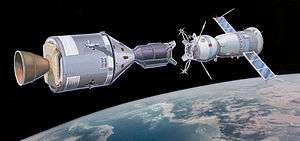 An artist impression of an American Apollo spacecraft and Soviet Soyuz spacecraft docking, a propaganda portrait for the Apollo–Soyuz Test Project mission
An artist impression of an American Apollo spacecraft and Soviet Soyuz spacecraft docking, a propaganda portrait for the Apollo–Soyuz Test Project mission America's first space station Skylab in orbit February 8, 1974
America's first space station Skylab in orbit February 8, 1974 Viking 1, the first of two spacecraft sent to Mars, takes this picture of the landing site in Chryse Planitia (1978)
Viking 1, the first of two spacecraft sent to Mars, takes this picture of the landing site in Chryse Planitia (1978) Voyager 1 passing by Jupiter's Great Red Spot February 25, 1979
Voyager 1 passing by Jupiter's Great Red Spot February 25, 1979
Biology
- The first face lifts were attempted in the 1970s.
- The first MRI image was published in 1973.
- César Milstein and Georges Köhler reported their discovery of how to use hybridoma cells to isolate monoclonal antibodies, effectively beginning the history of monoclonal antibody use in science.
- Carl Woese and George E. Fox classified archaea as a new, separate domain of life.
- "Lucy", a fossilized hominid of the species Australopithecus afarensis, was discovered in the Afar region of Ethiopia by Donald Johanson in 1974, providing evidence for bipedalism as an early occurrence in human evolution.[7]
- After successful vaccination campaigns throughout the 19th and 20th centuries, the WHO certified the eradication of smallpox in December 1979.
- The first organisms genetically engineered were bacteria in 1973 and then mice in 1974.
- 1977 The first complete DNA genome to be sequenced is that of bacteriophage φX174.
- In 1978, Louise Brown became the first child to be born via in vitro fertilisation, or IVF.
Social science
Social science intersected with hard science in the works in natural language processing by Terry Winograd (1973) and the establishment of the first cognitive sciences department in the world at MIT in 1979. The fields of generative linguistics and cognitive psychology went through a renewed vigor with symbolic modeling of semantic knowledge while the final devastation of the long-standing tradition of behaviorism came about through the severe criticism of B. F. Skinner's work in 1971 by the cognitive scientist Noam Chomsky.
Technology
Electronics and communications
The birth of modern computing was in the 1970s, which saw the development of:
- Intel 4004, the world's first general microprocessor
- the C programming language
- rudimentary personal computers, with the launch of the Datapoint 2200
- pocket calculators
- the Magnavox Odyssey, the first home video game console
- the Sony Walkman, built in 1978 by Japanese audio-division engineer Nobutoshi Kihara
- consumer video games, after the release of Computer Space
- the earliest floppy disks, invented at IBM, which were 8 inches wide and long, commercially available by 1971
- email, with the first transmission in 1971
- electronic paper, developed by Nick Sheridon at Xerox's Palo Alto Research Center (PARC)
- the Xerox Alto of 1973, the first computer to use the desktop metaphor and mouse-driven graphical user interface (GUI)
The 1970s were also the start of:
- fiber optics, which transformed the communications industry
- microwave ovens, which became commercially available
- VCRs, which became commercially available
- the first voicemail system, known as the Speech Filing System (SFS), invented by Stephen J. Boies in 1973
- e-commerce, invented in 1979 by Michael Aldrich
- DiscoVision in 1978, the first commercial optical disc storage medium
- positron emission tomography, invented in 1972 by Edward J. Hoffman and fellow scientist Michael Phelps
- cell phones, with the first call transmitted in 1973, Martin Cooper of Motorola
- car phone services, first available in Finland in 1971 in form of the zero-generation ARP (Autoradiopuhelin, or Car Radiophone) service
- Apple Computer Company, founded in 1976
 The first scientific hand-held calculator (HP-35) is introduced.
The first scientific hand-held calculator (HP-35) is introduced. 8-inch floppy disk
8-inch floppy disk A Philips N1500 video cassette recorder, with wooden cabinet.
A Philips N1500 video cassette recorder, with wooden cabinet. Atari 2600, launched in 1977.
Atari 2600, launched in 1977.- Sony Walkman, the original TPS-L2 model.
_8-voices_dual-layered_analog_polyphonic_synthesizer%2C_with_22_preset_sounds_%26_6_user_patches_-_VINTAGE_SYNTH_%40_YAMAHA_BOOTH_-_2015_NAMM_Show.jpg) 1970s analogue synthesizer Yamaha CS-80.
1970s analogue synthesizer Yamaha CS-80.
Rail
British Rail introduced high-speed trains on InterCity services. The trains consisted of British Rail Class 43 diesel-electric locomotives at either end with British Rail Mark 3 carriages. The trains were built in the United Kingdom by British Rail Engineering Limited. The high speed trains ran at 125 miles per hour (201 km/h) speeding up journeys between towns and cities and is still known as the InterCity 125.
Amtrak was formed in the United States in 1971, assuming responsibility for inter-city passenger operations throughout the country. In 1976, Conrail was formed to take over assets of six bankrupt freight railroads in the northeastern US.
Automobiles
The 1970s was an era of fuel price increases, rising insurance rates, safety concerns, and emissions controls. The 1973 oil crisis caused a move towards smaller, fuel-efficient vehicles. Attempts were made to produce electric cars, but they were largely unsuccessful. In the United States, imported cars became a significant factor for the first time, and several domestic-built subcompact models entered the market. American-made cars such as the "quirky" AMC Gremlin, the jelly bean shaped AMC Pacer, and Pontiac Firebird's powerful Trans Am "sum up" the decade.[8] Muscle cars and convertible models faded from favor during the early-1970s. It was believed that the 1976 Cadillac Eldorado would be the last American-built convertible; ending the open body style that once dominated the auto industry.[9]
Cars in the U.S. from the early 1970s are noted more for their power than their styling, but they even lost their power by the late-1970s.[10] Styling on American cars became progressively more boxy and rectilinear during the 1970s,[11] with coupes being the most popular body style. Wood paneling and shag carpets dominated the interiors. Many automobiles began to lose their character and looked the same across brands and automakers, as well as featuring "luxury" enhancements such as vinyl roofs and opera windows.[10] Only a few had "real personalities" such as the AMC Gremlin, which was America's first modern subcompact, and the AMC Pacer.[10] "These two cars embody a sense of artful desperation that made them stand out from the crowd and epitomize at once the best and worst of the seventies."[10]
Automobiles in the U.S. reached the largest sizes they would ever attain, but by 1977, General Motors managed to downsize its full-size models to more manageable dimensions. Ford followed suit two years later, with Chrysler offering new small front-wheel-drive models, but was suffering from a worsening financial situation caused by various factors. By 1979, the company was near bankruptcy, and under its new president Lee Iacocca (who had been fired from Ford the year before), asked for a government bailout. American Motors beat out the U.S. Big Three to subcompact sized model (the Gremlin) in 1970, but its fortunes declined throughout the decade, forcing it into a partnership with the French automaker Renault in 1979.
European car design underwent major changes during the 1970s due to the need for performance with high fuel efficiency—designs such as the Volkswagen Golf and Passat, BMW 3, 5, and 7 series, and Mercedes-Benz S-Class appeared at the latter half of the decade. Ford Europe, specifically Ford Germany, also eclipsed the profits of its American parent company. The designs of Giorgetto Giugiaro became dominant, along with those of Marcello Gandini in Italy. The 1970s also saw the decline and practical failure of the British car industry—a combination of militant strikes and poor quality control effectively halted development at British Leyland, owner of all other British car companies during the 1970s.
The Japanese automobile industry flourished during the 1970s, compared to other major auto markets. Japanese vehicles became internationally renowned for their affordability, reliability, and fuel-efficiency, which was very important to many customers due to the oil embargo. Japanese car manufacturing focused on computerized robotic manufacturing techniques and lean manufacturing, contributing to high-efficiency and low production costs. The Honda Civic was introduced in 1973, and sold well due to its high fuel-efficiency. Other popular compact cars included the Toyota Corolla and the Datsun Sunny, in addition to other cars from those companies and others such as Subaru, Mitsubishi, and Mazda.
 1970 Dodge Challenger Trans Am, example of muscle cars in the earlier part of the decade.
1970 Dodge Challenger Trans Am, example of muscle cars in the earlier part of the decade. Honda Civic sold well throughout the decade.
Honda Civic sold well throughout the decade.
Society
Role of women in society


The role of women in society was profoundly altered with growing feminism across the world and with the presence and rise of a significant number of women as heads of state outside monarchies and heads of government in a number of countries across the world during the 1970s, many being the first women to hold such positions. Non-monarch women heads of state and heads of government in this period included Isabel Martínez de Perón as the first woman President in Argentina and the first woman non-monarch head of state in the Western hemisphere in 1974 until being deposed in 1976, Elisabeth Domitien becomes the first woman Prime Minister of the Central African Republic, Indira Gandhi continuing as Prime Minister of India until 1977 (and taking office again in 1980), Prime Minister Golda Meir of Israel and acting Chairman Soong Ching-ling of the People's Republic of China continuing their leadership from the sixties, Lidia Gueiler Tejada becoming the interim President of Bolivia beginning from 1979 to 1980, Maria de Lourdes Pintasilgo becoming the first woman Prime Minister of Portugal in 1979, and Margaret Thatcher becoming the first woman Prime Minister of the United Kingdom in 1979. Both Indira Gandhi and Margaret Thatcher would remain important political figures in the following decade in the 1980s.
Social movements
Anti-war protests

The opposition to the War in Vietnam that began in the 1960s grew exponentially during the early 1970s. One of the best-known anti-war demonstrations was the Kent State shootings. In 1970, university students were protesting the war and the draft. Riots ensued during the weekend and the National Guard was called in to maintain the peace. However, by 4 May 1970, tensions arose again, and as the crowd grew larger, the National Guard started shooting. Four students were killed and nine injured. This event caused disbelief and shock throughout the country and became a staple of anti-Vietnam demonstrations.
Environmentalism
The 1970s started a mainstream affirmation of the environmental issues early activists from the 1960s, such as Rachel Carson and Murray Bookchin, had warned of. The Apollo 11 mission, which had occurred at the end of the previous decade, had transmitted back concrete images of the Earth as an integrated, life-supporting system and shaped a public willingness to preserve nature. On April 22, 1970, the United States celebrated its first Earth Day, in which over two thousand colleges and universities and roughly ten thousand primary and secondary schools participated.
Sexual Revolution
The 1960s counterculture movement had rapidly undone many existing social taboos, and divorce, extramarital sex, and homosexuality were increasingly accepted in the Western world. The event of legalized abortion and over-the-counter birth control pills also played a major factor. Western Europe was in some ways more progressive on sexual liberation than the United States, as nudity in film and on TV had been gradually accepted there from the mid-1960s, and many European countries during this time began allowing women to go topless in public places. Nudist culture was also popular during the decade, especially in Germany and Scandinavia. Child erotica found a niche market, but would eventually be banned under child pornography laws in the 1980s to 1990s.
The market for adult entertainment in the 1970s was large, and driven in part by the sizable baby boomer population, and the 1972 movie Behind the Green Door, an X-rated feature, became one of the top-grossing films of the year. Playboy Magazine appeared increasingly dull and old-fashioned next to new, more explicit sex-themed magazines such as Penthouse Magazine and Hustler Magazine.
By the end of the decade, there was an increasing backlash against libertine sexual attitudes, and the event of the AIDS epidemic helped bring about an end to the Sexual Revolution. Adult movie theaters, which had exploded in numbers during the 1970s and were widely seen as a symptom of urban decay in the US, declined as pornographic movies would largely shift to VHS tapes during the succeeding decade.
Crime and urban decay
Crime rates in the US had been low from the 1940s until the mid-1960s, but began to escalate after 1965 due to a complex of social, economic, and demographic factors. By the 1970s, crime and blighted urban areas were a serious cause of concern, New York City being particularly affected. In 1972, the US Supreme Court ruled capital punishment unconstitutional, then reversed the ruling only four years later. Lax judicial and sentencing practices in the US during the 1960s and 1970s also contributed to high crime rates.
Feminism
The Second-Wave Feminist Movement in the United States, which had begun in the 1960s, carried over to the 1970s, and took a prominent role within society. The fiftieth anniversary of the passage of the Nineteenth Amendment to the United States Constitution (which legalized female suffrage) in 1970 was commemorated by the Women's Strike for Equality and other protests.
With the anthology Sisterhood is Powerful and other works, such as Sexual Politics, being published at the start of the decade, feminism started to reach a larger audience than ever before. In addition, the Supreme Court's 1973 decision of Roe v. Wade, which constitutionalized the right to an abortion, brought the women's rights movement into the national political spotlight.
Gloria Steinem, Betty Friedan, Betty Ford, Shirley Chisholm, Bella Abzug, Robin Morgan, Kate Millet and Elizabeth Holtzman, among many others, led the movement for women's equality.
Even musically, the women's movement had its shining moment. Australian-American singer Helen Reddy, recorded the song "I Am Woman", which became an anthem for the women's liberation movement. "I Am Woman" reached No. 1 on the Billboard Hot 100 chart and even won Helen her one and only Grammy Award.
Most efforts of the movement, especially aims at social equality and repeal of the remaining oppressive, sexist laws, were successful. Doors of opportunity were more numerous and much further open than before as women gained unheard of success in business, politics, education, science, the law, and even the home. Though most aims of the movement were successful, however, there were some significant failures, most notably the failure to ratify the Equal Rights Amendment to the U.S. Constitution with only three more states needed to ratify it (efforts to ratify ERA in the unratified states continues to this day and twenty-two states have adopted state ERAs). Also, the wage gap failed to close, but it did become smaller.
The second wave feminist movement in the United States largely ended in 1982 with the failure of the Equal Rights Amendment, and with new conservative leadership in Washington, D.C.. American women created a brief, but powerful, third-wave in the early 1990s which addressed sexual harassment (inspired by the Anita Hill–Clarence Thomas Senate Judiciary Committee hearings of 1991). The results of the movement included a new awareness of such issues amongst women, and unprecedented numbers of women elected to public office, particularly the United States Senate.
Civil rights
The Civil Rights Movement of the 1960s began to fracture in the 1970s, as social groups began defining themselves more by their differences than by their universalities. The Black Nationalist movement grew out of frustrations with the "non-violent" strategies of earlier Civil Rights Activists. With the assassinations of both Martin Luther King, Jr. and Senator Bobby Kennedy, many blacks were compelled to reject ideas of negotiation and instead embrace isolation. The feminist movement also splintered from a larger push for Civil Rights in the 1970s. The seventies were seen as the "woman's turn", though many feminists incorporated civil rights ideals into their movement. A feminist who had inherited the leadership position of the civil rights movement from her husband, Coretta Scott King, as leader of the black movement, called for an end to all discrimination, helping and encouraging the Woman's Liberation movement, and other movements as well. At the National Women's Conference in 1977 a minority women's resolution, promoted by King and others, passed to ensure racial equality in the movement's goals. Similarly, the gay movement made a huge step forward in the 1970s with the election of political figures such as Harvey Milk to public office and the advocating of anti-gay discrimination legislation passed and not passed during the decade. Many celebrities, including Freddie Mercury and Andy Warhol, also "came out" during this decade, bringing gay culture further into the limelight.
Youth suffrage
The Twenty-sixth Amendment to the United States Constitution was ratified on July 1, 1971, lowering the voting age for all federal and state elections from 21 years to 18 years. The primary impetus for this change was the fact that young men were being drafted to fight in the Vietnam War before they were old enough to vote.
Popular culture
Music

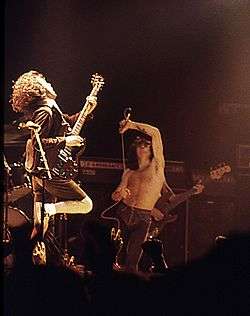
During the early 1970s, popular music continued to be dominated by musicians who had achieved fame during the 1960s such as the Rolling Stones, The Who, Bob Dylan, The Grateful Dead, and Eric Clapton. In addition, many newcomer rock groups such as Black Sabbath and Led Zeppelin appeared. The Beatles disbanded in 1970, but each member of the band immediately released a highly successful solo album, and Paul McCartney especially would remain extremely popular throughout the decade. Singer-songwriters such as James Taylor and Jackson Browne also came into vogue during the early 1970s.
The 1970s saw the rapid commercialization of rock music, and by mid-decade there were a spate of bands derisively dubbed "corporate rock" due to the notion that they had been created by record labels to produce simplistic, radio-friendly songs based around cliches rather than meaningful lyrics. Such bands included The Doobie Brothers, Bread, Styx, Kansas, and REO Speedwagon.
Funk, an offshoot of soul music with a greater emphasis on beats, and influences from rhythm and blues, jazz, and psychedelic rock, was also very popular. The mid-1970s also saw the rise of disco music, which dominated during the last half of the decade with bands like the Bee Gees, Chic, ABBA, Village People, Boney M, Donna Summer, KC and the Sunshine Band, and others. In response to this, rock music became increasingly hard-edged, with British early metal artists like Led Zeppelin, Black Sabbath, and Deep Purple. Minimalism also emerged, led by composers such as Philip Glass, Steve Reich and Michael Nyman. This was a break from the intellectual serial music in the tradition of Schoenberg, which lasted from the early 1900s to 1960s.
Experimental classical music influenced both art rock and progressive rock genres with bands such as Yes, Pink Floyd, Todd Rundgren's Utopia, Supertramp, Rush, Genesis, King Crimson, Emerson, Lake & Palmer, Jethro Tull, The Moody Blues and Soft Machine. Hard rock and Heavy metal also emerged among British bands Led Zeppelin, Queen, The Who, Black Sabbath, UFO, Deep Purple, Uriah Heep, and Judas Priest. Australian band AC/DC also found its hard-rock origins in the early 1970s and its breakthrough in 1979's Highway to Hell, while popular American rock bands included Aerosmith, Lynyrd Skynyrd and shock rockers Alice Cooper, Blue Öyster Cult, and Kiss, and guitar-oriented Ted Nugent and Van Halen. In Europe, there was a surge of popularity in the early decade for glam rock.
The second half of the decade saw the rise of punk rock, when a spate of fresh, young rock groups playing stripped-down hard rock came to prominence at a time when most of the artists associated with the 1960s to early 1970s were in creative decline. Punk bands included The Sex Pistols, The Clash, The Ramones, The Talking Heads, and more.
The highest-selling album was Pink Floyd's The Dark Side of the Moon (1973). It remained on the Billboard 200 albums chart for 741 weeks. Electronic instrumental progressive rock was particularly significant in continental Europe, allowing bands like Kraftwerk, Tangerine Dream, Can, and Faust to circumvent the language barrier. Their synthesiser-heavy "krautrock", along with the work of Brian Eno (for a time the keyboard player with Roxy Music), would be a major influence on subsequent synthrock.[12] The mid-1970s saw the rise of electronic art music musicians such as Jean Michel Jarre, Vangelis, and Tomita, who with Brian Eno were a significant influence of the development of new-age music. Japanese band Yellow Magic Orchestra helped to pioneer synthpop, with their self-titled album (in 1978) setting a template with less minimalism and with a strong emphasis on melody, and drawing from a wider range of influences than had been employed by Kraftwerk. YMO also introduced the microprocessor-based Roland MC-8 sequencer and TR-808 rhythm machine to popular music.
In the first half of the 1970s, many jazz musicians from the Miles Davis school achieved cross-over success through jazz-rock fusion with bands like Weather Report, Return to Forever, The Headhunters and The Mahavishnu Orchestra who also influenced this genre and many others. In Germany, Manfred Eicher started the ECM label, which quickly made a name for "chamber jazz". Towards the end of the decade, Jamaican reggae music, already popular in the Caribbean and Africa since the early 1970s, became very popular in the U.S. and in Europe, mostly because of reggae superstar and legend Bob Marley. The mid-1970s saw the reemergence of acoustic jazz with the return of artists like Dexter Gordon to the US music scene, who, along with a number of other artists, such as trumpet innovators like Don Ellis and Woody Shaw, who were among the last of the decade's traditionally-oriented acoustic jazz musicians to be signed to major record labels, to receive critical and widespread commercial recognition and multiple Grammy nominations.
The late 1970s also saw the beginning of hip hop music with disc jockeys like DJ Kool Herc and Afrika Bambaataa taking loops from funk and soul records and play them repeatedly at block parties and dance clubs. At the end of the 1970s, popular songs like "Rapper's Delight" by Sugarhill Gang gave hip hop a wider audience. Hip hop was also influenced by the song "The Revolution Will Not Be Televised" by Gil Scott-Heron. Country music remained very popular in the United States. Between 1977 and 1979, it became more mainstream, as Kenny Rogers, Dolly Parton, Waylon Jennings, Willie Nelson and Allman Brothers Band all scored hits which reached both country and pop charts.
A major event in music in the early 1970s was the deaths of popular rock stars Jimi Hendrix, Janis Joplin, and Jim Morrison, all at the age of 27. Two of popular music's most successful artists from other eras died within eight weeks of each other in 1977. Elvis Presley, the best-selling singer of all time, died on August 16, 1977.[13] Presley's funeral was held at Graceland, on Thursday, August 18, 1977. Bing Crosby, who sold about 50 million records, died on October 14, 1977. His single, White Christmas, remains as the best selling single of all time, confirmed by the Guinness Records.[14]
Statistically, Led Zeppelin was the most successful musical act of the 1970s, having sold more than 300 million records since 1969.[15]
Film


Oscar winners of the decade were Patton (1970), The French Connection (1971), The Godfather (1972), The Sting (1973), The Godfather Part II (1974), One Flew Over the Cuckoo's Nest (1975), Rocky (1976), Annie Hall (1977), The Deer Hunter (1978), and Kramer vs. Kramer (1979).
The top ten highest-grossing films of the decade are (in order from highest to lowest grossing): Star Wars, Jaws, Grease, The Exorcist, Close Encounters of the Third Kind, Superman, The Godfather, Saturday Night Fever, Rocky, and Jaws 2.[16] Two of these movies came out on the same day, June 16, 1978.
In 1970s European cinema, the failure of the Prague Spring brought about nostalgic motion pictures such as István Szabó's Szerelmesfilm (1970). German New Wave and Rainer Fassbinder's existential movies characterized film-making in Germany. The movies of the Swedish director Ingmar Bergman reached a new level of expression in motion pictures like Cries and Whispers (1973).
Asian cinema of the 1970s catered to the rising middle class fantasies and struggles. In the Bollywood cinema of India, this was epitomized by the movies of Bollywood superhero Amitabh Bachchan. Another Asian touchstone beginning in the early 1970s was Hong Kong martial arts film which sparked a greater interest in Chinese martial arts around the world. Martial arts film reached the peak of its popularity largely in part due to its greatest icon, Bruce Lee.
During the 1970s, Hollywood continued the New Hollywood revolution of the late-1960s with young film-makers. Top-grossing Jaws (1975) ushered in the blockbuster era of filmmaking, though it was eclipsed two years later by the science-fiction film Star Wars (1977). Saturday Night Fever (1977) single-handedly touched off disco mania in the U.S. The Godfather (1972) was also one of the decade's greatest successes and its first follow-up, The Godfather Part II (1974) was also successful for a sequel.
The Rocky Horror Picture Show flopped in its 1975 debut, only to reappear as a more-popular midnight show later in the decade. Still in limited release 36 years after its premiere, it is the longest-running theatrical release in film history.
The Exorcist (1973) was a box office success for the horror genre, inspiring many other so-called "devil (Satan)" films like The Omen and both of their own sequels.
All That Jazz (1979) gained high critical praise, winning four Oscars and several other awards. In 2001 the United States Library of Congress deemed the film "culturally significant" and selected it for preservation in the National Film Registry.
Television
United Kingdom
In the United Kingdom, colour channels were now available; three stations had begun broadcasting in colour between 1967 and 1969. However, many viewers continued to watch black-and-white television sets for most of the decade, which meant for example that televised snooker (in which the colour of balls is important) did not reach the heights of its popularity until the 1980s.
Notable dramas included Play for Today and Pennies from Heaven. In police dramas, there was a move towards increasing realism; popular shows included Dixon of Dock Green, Z-Cars, Softly, Softly, and The Sweeney.
The science fiction show Doctor Who reached its peak.
1970s UK television featured a mix of traditional and more modern comedy. Morecambe and Wise, The Benny Hill Show, Are You Being Served? and Dad's Army had their origins in the variety show and radio comedy of the first half of the century. Many popular British situation comedies (sit-coms) were gentle, unchallenging comedies of middle-class life; typical examples were Terry and June and Sykes. However, the middle-class settings of The Good Life and The Fall and Rise of Reginald Perrin contrasted with their anti-establishment theme of people rejecting traditional social norms. A harsher side of society was shown by comedy series like Porridge and Rising Damp, while sitcoms such as Mind Your Language, Love Thy Neighbour and Till Death Us Do Part reflected social unease brought about by post-war immigration. Spike Milligan's Q and the still-popular Monty Python's Flying Circus both used surreal comedy, originating from the 1950s The Goon Show.
The television information retrieval service Teletext was initially introduced when the BBC Ceefax system went live on 23 September 1974.
In the late 1970s, BBC2's unveiled a new identity, a twin-striped "2", which was the first electronically generated symbol and scrolled on and off the screen.
United States
As the 1970s began, the Big Three TV networks were rapidly re-engineering their lineups, noting that existing programs were not attracting the youth audience. Most existing programs still operated on paradigms established in the 1950s, and some shows had literally been on the air since the dawn of TV broadcasting in the late 1940s and early 1950s. Shows that had low ratings or insufficient youth appeal were cancelled as networks scrambled to attract the large baby boomer audience.
To reflect the new social trends, television changed dramatically with more urban and edgy settings, and replaced the popular rural/country wholesome look of the 1950s and 1960s, seen as outmoded and unable to connect with young, educated urban audiences. This particular trend was known as the rural purge. Television was transformed by what became termed as "social consciousness" programming, such as All in the Family and Soap, which broke down television barriers.
The women's movement ushered in a slew of programming featuring strong, independent females as central characters. Most notable was The Mary Tyler Moore Show, which spawned the successful spin-offs Rhoda and Phyllis, and also resulted in Mary Tyler Moore becoming the first female to head a television production company of her own, MTM Enterprises, which churned out groundbreaking programming in the late 1970s throughout the 1990s. Women were also established portraying strong characters in programs like Police Woman, Wonder Woman, The Bionic Woman, and others.
Minority-centric television programming also featured prominently during the 1970s. Shows featuring minorities as main characters, such as Sanford and Son, Maude and Good Times, broke down barriers and became very popular. In addition, Soul Train, the brainchild of Don Cornelius, premiered in 1971 as an alternative to American Bandstand, giving a forum for soul, funk, jazz, R&B, disco, and future rap and hip hop artists to gain exposure to American audiences, consumers, music lovers, enthusiasts, and those keen on learning new dance moves.
The television western, which had been very popular in the 1950s and 1960s, all but died out during the 1970s, with Bonanza, The Virginian, and Gunsmoke ending their runs. Replacing westerns were police and detective shows, a trend that would last through the 1980s.
Television still had its medical shows of the 1970s, however, Emergency! was the first popular medical drama ever to feature both the paramedic program as well as the hospital emergency department, which also encouraged future people in the United States to develop their own paramedic program or hospital emergency department, and acted as an inspiration for many individuals.
By the mid-to-late 1970s, "jiggle television"—programs oriented toward sexual gratification and bawdy humor and situations such as Charlie's Angels, The Love Boat, and Three's Company—became popular.
Soap operas expanded their audiences beyond housewives with the rise of All My Children, As the World Turns, Somerset, and The Young and the Restless.
Game shows such as Match Game, The Hollywood Squares, and Family Feud were also popular daytime television. The height of Match Game's popularity occurred between 1973 and 1977, before it was overtaken by Family Feud in 1978. Television's current longest-running game show, The Price Is Right, began its run hosted by Bob Barker in 1972.
Another influential genre was the television newscast, which built on its initial widespread success in the 1960s.
The science fiction phenomenon of the late 1970s that began with Star Wars went to television with shows such as Battlestar Galactica.
Variety shows, a staple of TV programming since the beginning, were also re-engineered to appeal to young viewers. Old standbys such as The Ed Sullivan Show and The Red Skelton Show were canceled and replaced by hipper programming like Sonny and Cher Comedy Hour and Donny & Marie. The Carol Burnett Show also ended its historic 11-year run in 1978. In the end, rising production costs largely did in variety shows.
Pay television
As cable television became more affordable and accessible by U.S. consumers, the race to bring the silver screen to the small screen commenced with the launch of pay television services showing premium content.
HBO launched on November 8, 1972, becoming the nation's first pay-television channel. On September 30, 1975, HBO became the first television network to continuously deliver signals via satellite when it showed the "Thrilla in Manila" boxing-match between Muhammad Ali and Joe Frazier.
Star Channel launched their service offerings nationally in 1973 through the delivery of movies on video tapes for cable providers to broadcast. This proved problematic since the videotapes were often riddled with technical difficulties. Star Channel eventually was linked up to satellite in January 1978. Shortly after, Warner Communications acquired the channel and relaunched it on December 1, 1979, in its current form as The Movie Channel.
Media giant Viacom launched their premium service, Showtime, nationally on July 1, 1976, after a brief, wildly successful test launch on their cable system in Dublin, California.[17]
Australia
In 1974, Australian TV tests color transmissions (full-time color comes in 1975). Popular Shows during the Decade include, Young Talent Time,* Number 96, The Aunty Jack Show, Class of '74, The Sullivans, The Don Lane Show, Cop Shop, The Naked Vicar Show, The Paul Hogan Show and Countdown.
South Africa
South Africa saw nationwide television service for the first time on January 5, 1976, although limited-view, locally available television began on May 5, 1975.
Computer and video games



- Popular and notable video games of the 1970s include: Space Invaders, Asteroids, Snake, Pong, and Breakout.
- Golden age of video arcade games
- Gun Fight was the first video game to contain a microprocessor.
- Don Daglow wrote the first computer baseball game on a DEC PDP-10 mainframe at Pomona College.
- The Oregon Trail was the first publicly available educational video game made available for widespread use in schools on December 3, 1971. The game is a cult classic and is still used today, in a wide variety of formats, through emulators and on smart phones.
- The first commercially available video game console, entitled Magnavox Odyssey, was released in May 24, 1972, created by Ralph H. Baer.
- 1974: Both Maze War (on the Imlac PDS-1 at the NASA Ames Research Center in California) and Spasim (on PLATO) appeared, pioneering examples of early multiplayer 3D first-person shooters.
- In 1976, Mattel introduced the first handheld electronic game with the release of Mattel Auto Race.
- Then, in 1976, William Crowther wrote the first modern text adventure game, Colossal Cave Adventure.
- Apple, Inc. ushered in the modern personal computing age with its June 1, 1977, launch of the first mass-produced personal computer, the Apple II. Although many business-focused personal workstations were available to corporations years earlier, the Apple II has the distinction of being the first to produce personal computers specifically targeted to home users, beating the Commodore PET and Atari 400 to the market by five months. Its initial price tag was US$4999.99 for the CPU only.
- The Atari 2600 was released in October 1977 and was a huge commercial success. It is also credited for being the first gaming console to have a plug-in concept. It was challenged by the Magnavox Odyssey² and Intellivision.
- Fairchild Channel F from 1976 becomes the first programmable ROM cartridge-based video game console.
- The Microvision was the very first hand-held game console using interchangeable cartridges. It was released by the Milton Bradley Company in November 1979.
Sports
The 1972 Summer Olympics in Munich, Germany saw swimmer Mark Spitz set seven World Records and won a record seven gold medals. The 1976 Summer Olympics were held in Montreal, Quebec, Canada. Brazil won the 1970 FIFA World Cup in Mexico, West Germany won the 1974 FIFA World Cup in West Germany, and Argentina won the 1978 FIFA World Cup in Argentina. The 1970 FIFA World Cup was the first world cup to be televised in color.
On April 9, 1975, Asia's first professional basketball league, the Philippine Basketball Association (PBA) were played first game at the Araneta Coliseum in Cubao, Quezon City, Philippines.
United States
The Oakland Athletics three-peated at the World Series in 1972-1974.
The Cincinnati Reds go to the World Series in 1970, 1972, 1975, and 1976, led by the Big Red Machine winning two out of four.
The New York Yankees won the World Series in 1977 and 1978 after losing in 1976.
The Dallas Cowboys and the Pittsburgh Steelers dominated the decade in the NFL. Steelers were led by Terry Bradshaw and Chuck Noll, and the Cowboys were led by Roger Staubach and Tom Landry.
The Philadelphia Flyers won the Stanley Cup in 1974 and 1975.
Disc sports (Frisbee)

As numbers of young people became alienated from social norms, they resisted and looked for alternatives. They would form what would become known as the counterculture. The forms of escape and resistance would manifest in many ways including social activism, alternative lifestyles, experimental living through foods, dress, music and alternative recreational activities, including that of throwing a frisbee.[18] What started with a few players like Victor Malafronte, Z Weyand and Ken Westerfield experimenting with new ways of throwing and catching a frisbee, later would become known as playing freestyle.[19] Organized disc sports, in the 1970s, began with promotional efforts from Wham-O and Irwin Toy (Canada), a few tournaments and professionals using frisbee show tours to perform at universities, fairs and sporting events. Disc sports such as freestyle, double disc court, guts, disc ultimate and disc golf became this sports first events.[20][21]
Literature
Fiction in the early '70s brought a return to old-fashioned storytelling, especially with Erich Segal's Love Story. The seventies also saw the decline of previously well-respected writers, such as Saul Bellow and Peter De Vries, who both released poorly received novels at the start of the decade. Racism remained a key literary subject. John Updike emerged as a major literary figure. Reflections of the 1960s experience also found roots in the literature of the decade through the works of Joyce Carol Oates and Wright Morris. With the rising cost of hard-cover books and the increasing readership of "genre fiction", the paperback became a popular medium. Criminal non-fiction also became a popular topic. Irreverence and satire, typified in Kurt Vonnegut's Breakfast of Champions, were common literary elements. The horror genre also emerged, and by the late 1970s Stephen King had become one of the most popular genre novelists.
In non-fiction, several books related to Nixon and the Watergate scandal topped the best-selling lists. 1977 brought many high-profile biographical works of literary figures, such as those of Virginia Woolf, Agatha Christie, and J. R. R. Tolkien.
Architecture
.jpg)

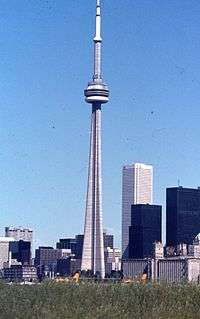
Architecture in the 1970s began as a continuation of styles created by such architects as Frank Lloyd Wright and Ludwig Mies van der Rohe. Early in the decade, several architects competed to build the tallest building in the world. Of these buildings, the most notable are the John Hancock Center and Sears Tower in Chicago, both designed by Bruce Graham and Fazlur Khan, and the World Trade Center towers in New York by American architect Minoru Yamasaki. The decade also brought experimentation in geometric design, pop-art, postmodernism, and early deconstructivism.
Design trends in the 1970s were marked by a backlash against the bright colors and futurism of the 1950s and 1960s and a rise in popularity of dark, earthy tones with extensive use of brown, green, purple, and orange. Wood decor and paneling was integral to 1970s interior design as well, replacing the obsession of the 1950s and 1960s with chrome and aluminum. Darker colors not only reflected the back-to-nature mindset of the decade, but the sluggish world economy with its lowered optimism and expectations for the future.
In 1974 Louis Kahn's last and arguably most famous building, the National Assembly Building of Dhaka, Bangladesh, was completed. The building's use of open spaces and groundbreaking geometry brought rare attention to the small South Asian country. Hugh Stubbins's Citicorp Center revolutionized the incorporation of solar panels in office buildings. The seventies brought further experimentation in glass and steel construction and geometric design. Chinese architect I. M. Pei's John Hancock Tower in Boston, Massachusetts, is an example, although like many buildings of the time, the experimentation was flawed and glass panes fell from the façade. In 1976, the completed CN Tower in Toronto became the world's tallest free-standing structure on land, an honor it held until 2007. The fact that no taller tower had been built between the construction of the CN Tower and the Burj Khalifa shows how innovative the architecture and engineering of the structure truly was.
Modern architecture was increasingly criticized as the decade went on from the point of view of postmodern architects, such as Philip Johnson, Charles Moore, and Michael Graves, who advocated a return to pre-modern styles of architecture and the incorporation of pop elements as a means of communicating with a broader public. Other architects, such as Peter Eisenman of the New York Five, advocated the pursuit of form for the sake of form and drew on semiotics theory for support.
"High Tech" architecture moved forward as Buckminster Fuller continued his experiments in geodesic domes, while the Georges Pompidou Center, designed by Renzo Piano and Richard Rogers, which opened in 1977, was a prominent example. As the decade drew to a close, Frank Gehry broke out in new direction with his own house in Santa Monica, a highly complex structure, half excavated out of an existing bungalow and half cheaply built construction using materials such as chicken wire fencing.
Terracotta Army figures, dating from 210 BC, were discovered in 1974 by some local farmers in Lintong District, Xi'an, Shaanxi Province, China, near the Mausoleum of the First Qin Emperor (Chinese: 秦始皇陵; pinyin: Qín Shǐhuáng Ling). In 1978 electrical workers in Mexico City found the remains of the Great Pyramid of Tenochtitlan in the middle of the city.
Fashion
Clothing styles during the 1970s were influenced by outfits seen in popular music groups and in Hollywood films.[22] In clothing, prints, especially from India and other parts of the world, were fashionable.[22]
Much of the 1970s fashion styles were influenced by the hippie movement.
Significant fashion trends of the 1970s include:
- Bell-bottomed pants remained popular throughout the decade. These combined with turtle necked shirts and flower-prints to form the characteristic 1970s look. In the later part of the decade, this gave way to three-piece suits, in large part because of the movie "Saturday Night Fever".
- Sideburns were popular for men, as were beards, which had been out of fashion since the 19th century.
- Women's hairstyles went from long and straight in the first half of the decade to the feathery cut of Farrah Fawcett.
- Platform shoes
- Leisure suits
- Mohawk hairstyle was associated with punk subculture
Miscellaneous 1970s trends
See also
Timeline
The following articles contain brief timelines which list the most prominent events of the decade:
1970 • 1971 • 1972 • 1973 • 1974 • 1975 • 1976 • 1977 • 1978 • 1979
References
- ↑ Howard Brick, "Review", American Historical Review (2012) 117#5 p 1537
- 1 2 Hays, Jeffrey (August 2012). "Economic History of Japan in the 1970a and 80s". Facts and Details. Retrieved 2012-12-02.
- ↑ Vatikiotis, P. J. (1992). The History of Modern Egypt (Fourth ed.). Baltimore: Johns Hopkins University. p. 443. ISBN 0-8018-4214-X.
- 1 2 Frum, David (2000). How We Got Here: The '70s. New York: Basic Books. pp. 292–293. ISBN 0-465-04195-7.
- ↑ "Inflation and CPI Consumer Price Index 1970-1979".
- ↑ "Misery Index".
- ↑ "What Was "Lucy"? Fast Facts on an Early Human Ancestor". National Geographic News. September 20, 2006.
- ↑ Hinckley, James; Robinson, Jon G. (2005). The Big Book of Car Culture: The Armchair Guide to Automotive Americana. MotorBooks/MBI Publishing Company. p. 9. ISBN 978-0-7603-1965-9. Retrieved 26 December 2010.
- ↑ Davis, Michael W. R. (1999). General Motors: A Photographic History. Arcadia Publishing SC. p. 100. ISBN 978-0-7385-0019-5. Retrieved 26 December 2010.
- 1 2 3 4 Hine, Thomas (2009). The Great Funk: Styles of the Shaggy, Sexy, Shameless 1970s. Farrar, Straus and Giroux. p. 41. ISBN 9780374531676. Retrieved 2 December 2012.
- ↑ Baxter, Mike (1995). Product Design: A Practical Guide to Systematic Methods of New Product Development. Taylor & Francis. p. 53. ISBN 978-0-7487-4197-7. Retrieved 26 December 2010.
- ↑ Unterberger, 2002, pp. 1330-1.
- ↑ Reaves, Jessica (August 15, 2002). "Person of the Week: Elvis Presley". Time.
- ↑ "Archived copy" (PDF). Archived from the original (PDF) on 2015-03-19. Retrieved 2010-10-05.
- ↑ Sorel-Cameron, Peter (2007-12-09). "Can Led Zeppelin still rock?". CNN. Retrieved 2010-07-30.
- ↑ "All-Time Box Office: World-wide". Archived from the original on 2011-11-26.
- ↑ Corporate profile: Showtime
- ↑ Jordan Holtzman-Conston (2010). Countercultural Sports in America: The History and Meaning of Ultimate Frisbee. Waltham, Mass. Retrieved 6 November 2013.
- ↑ "Freestyle Players Association". The History of Flying Disc Freestyle. Archived from the original on February 5, 2015. Retrieved November 11, 2013.
- ↑ "World Flying Disc Federation". WFDF Official Website. Retrieved October 19, 2013.
- ↑ "World Flying Disc Federation". History of the Flying Disc. Retrieved October 20, 2013.
- 1 2 "Time Machine > 1970s". Collectors Weekly, undated, retrieved on 2009-01-06.
Further reading
- Borstelmann, Thomas. The 1970s: A New Global History From Civil Rights to Economic Inequality (Princeton University Press; 2012) 401 pages; looks at new right movements, and the global impact of economic deregulation. excerpt and text search
- Ferguson, Niall, and Charles S. Maier, eds. The Shock of the Global: The 1970s in Perspective (2011) essays by leading scholars; 448 pp
- La Barca, Giuseppe. International Trade in the 1970s: The U.S., the EC, and the Growing Pressure of Protectionism (London: Bloomsbury, 2013) 224 pp.
- Padva, Gilad. Sexing the Past: Communal Exposure and Self-Examination in Gay Sex in the 70s. In Padva, Gilad, Queer Nostalgia in Cinema and Pop Culture, pp. 58–71 (Palgrave Macmillan, 2014, ISBN 978-1-137-26633-0).
- Wheen, Francis. Strange Days Indeed: The 1970s: The Golden Days of Paranoia (2010) 352pp; looks at general irrationalism (such as UFOs, psychic phenomena, mad cults), and terror (IRA bombings; Black September massacre at the Munich Olympics; Baader-Meinhof Gang in Germany; Symbionese Liberation Army.)
United States
- Berkowitz, Edward D. Something Happened: A Political and Cultural Overview of the Seventies (Columbia University Press, 2006). 283 pp., liberal perspective
- Carroll, Peter. It Seemed Like Nothing Happened: The Tragedy and Promise of America in the 1970s (1982)
- Cowie, Jefferson R. Stayin’ Alive: The 1970s and the Last Days of the Working Class (2010) excerpt, on U.S.
- Frum, David. How We Got Here: The 70s (2000), conservative perspective excerpt and text search
- Kalman, Laura. Right Star Rising: A New Politics, 1974-1980 (2010) 473pp; excerpt and text search
- Lehman, Katherine J. Those Girls: Single Women in Sixties and Seventies Popular Culture (University Press of Kansas, 2011). 280 pp. online review
- Sandbrook, Dominic. Mad as Hell: The Crisis of the 1970s and the Rise of the Populist Right (2012) excerpt and text search
- Schulman, Bruce. The Seventies: The Great Shift in American Culture, Society, and Politics (2001) excerpt and text search
- Stein, Judith. Pivotal Decade: How the United States Traded Factories for Finance in the Seventies (2010) 384pp excerpt and text search
Britain
- Beckett, Andy. When the Lights Went Out: Britain in the Seventies (2009) 576pp excerpt and textsearch
- Booker, Christopher. The Seventies: The Decade That Changed the Future (1980)
- Sandbrook, Dominic. State of Emergency: The Way We Were: Britain 1970–1974 (2010)
- Sandbrook, Dominic. Mad As Hell: The Crisis of the 1970s and the Rise of the Populist Right (2011)
- Sandbrook, Dominic. Seasons in the Sun: The Battle for Britain, 1974-1979 (2012)
- Turner, Alwyn W. Crisis? What Crisis?: Britain in the 1970s (2009) 336pp excerpt and text search
- Wybrow, Robert J. Britain Speaks Out, 1937-87: A social history as seen through the Gallup data (1989)
External links
| Wikimedia Commons has media related to 1970s. |
- Heroes of the 1970s - slideshow by Life magazine
- www.ultimate70s.com - Day-by-day news, sports, weather, prime-time TV listings and more!



